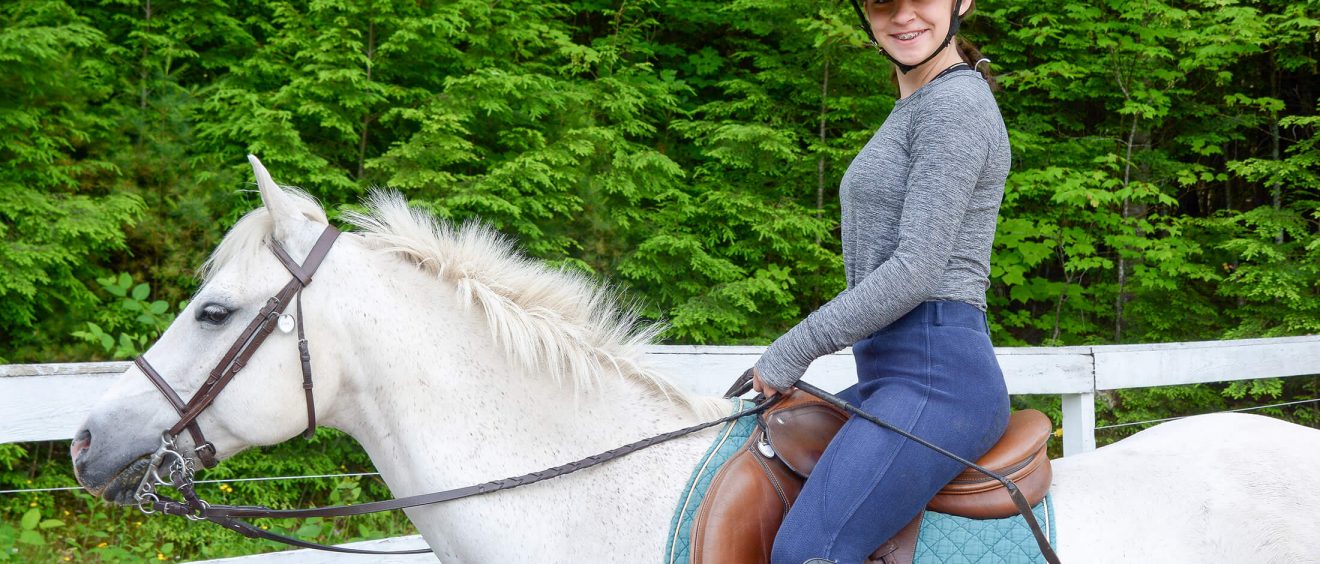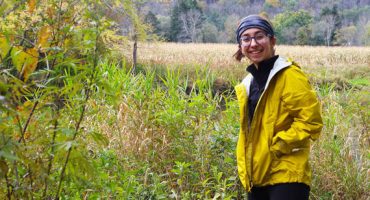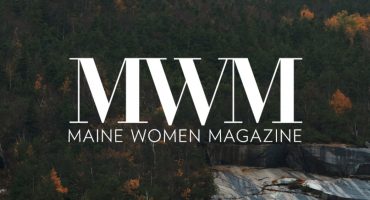
Recommended by the ACA
Looks like our riding program was listed in an American Camp Association article. Great read and thanks for the shout out!
Riding Programs at Camp: Enrichment of a Different Kind
Horseback riding has deep roots in the history of American summer camps, but stereotypical images of the expense and elitism of riding may get in the way of a full appreciation of the benefit and relevance of this activity today. Children need activities that foster empathy and compassion, responsibility and self-control. Skill-based riding programs provide for the development of a set of competencies that contribute to self-esteem and physical fitness. And achieving a working “friendship” with a horse remains a particularly empowering experience for both boys and girls. But there are countless marketing campaigns hard-selling what’s “hot” to buy and what’s “cool” to do with those precious summer hours, so parents and prospective campers may need some help to discern the benefits of learning the finer points of equitation, beginning barrel racing, or roughing it in the wilderness on horseback.
For example, a child who plays video games knows that the faster her reflexes, the faster she can manipulate the controls and master the game. But horses are not video games. There are no buttons to push, no joysticks. With good school horses, a rider needs to communicate, maintain balance, and be responsible for giving the horse direction in a safe manner. It may not be easy to entice children to do something that requires them to slow down and pay attention before they can ask horses to jump fences or canter. Safety and success depend on awareness, patience, and respect for another being — the horse. A good program of instruction and a good instructor teach a child to be gracious as well as graceful in the saddle.
Fundamentals of Successful Horsemanship Programs
Then, there’s the culture of celebrity. A horse show is not a rock concert; a rodeo is not MTV. And although riding can be athletically challenging, it isn’t football or soccer. Unlike tennis, golf, or figure skating, you won’t easily find role models competing on prime time television or collecting product endorsements. Nevertheless, far from shopping malls, theme parks, multiplex cinemas, and product tie-ins, there are many successful summer programs teaching children the pleasures and skills of good horsemanship. The variety of programs reflects the regional and cultural diversity of the nation, but successful programs do have a few fundamentals in common.
- High quality horses, instructors, and facilities. Some camps own and board horses, and others allow campers to bring their own horses. Some camps contract with nearby stables for instructors as well as horses. All seek to have the safest yet most capable horses to meet the needs and interests of campers with different levels of riding experience.
- Comprehensive safety program. Safety is a top priority and is reflected in all of the camp’s printed publications and Web site materials. This may include listing the background and credentials of program directors and instructors, indicating an appropriate level of fitness or experience, recommending proper clothing, requiring the use of safety equipment, and articulating clear behavioral guidelines.
- Identification of program elements and costs. Available hours of riding instruction, access to horses, barn responsibilities, and extra fees if applicable, are clearly articulated in all print materials and Web site information so that misunderstandings and disappointments are minimized. Whatever the structure and intensity of the program, communicating it clearly contributes to success for both the participant and the camp. In horseback riding, as in many things, if you put together a group with skill levels that are not reasonably matched, you run the risk of going from one extreme to the other — boring some campers but potentially humiliating others.
In every region of the country, there are many choices. Some programs solely focus on horses and riding and have been operating for many years. Some include horseback riding as the “core” of a program that includes other activities. And for some, riding is just one part of the camp’s array of traditional activities. There is no formula, no one model that is more popular than others. Camps around the country offer a variety of riding disciplines, program elements, and levels of immersion into skill development, horse care, and purely recreational trail riding. In addition, geography and regional culture play a role: Western in the West and Midwest, and English in the East. But that is not to say there are no dressage programs West of the Mississippi, and no Western trail riding programs in the East.
Common Goals
Summer equestrian programs have the same goals as most overnight camps. If you are fine-tuning an existing program or developing a new one, it helps to recall the basics. Paraphrasing The Summer Camp Handbook by Christopher A. Thurber and Jon C. Malinowski, good goals for a summer horse camp might aim for the campers to:
- Have fun!
- Improve athletic, artistic, and intellectual skills related to riding and the care of horses.
- Nurture independence and responsibility.
- Make friends and develop social skills not only with people but also with horses.
- Experience a new environment that involves developing skills with horses.
- Learn from positive adult role models how to be respectful and compassionate with another species — the horse. Learn not to be mean and to exercise power with grace.
As Thurber and Malinowski make clear, these goals are true to the core ideas and ideals of camp pioneers William and Abigail Gunn, who envisioned camp as a wellspring of “priceless memories and the spiritual growth of children.” In today’s world of specialty camps, summer riding programs deserve a fresh appraisal and perhaps a fresh “spin” from those who administer and market them. Some parents are looking for programs that combine summer fun with academic, athletic, or artistic enrichment. But equestrian programs offer enrichment of a different kind. Children have a chance to spend time with horses, learn to care for and communicate with them, and gain riding skills. They meet and live with adult role models and peers who share the love of horses, trail riding, or equestrian competition. For parents who are looking to “unplug” their kids from popular culture, computers, TV, and the shopping center for a few weeks, summer equestrian programs present an accessible and affordable alternative.
Alpengirl Wilderness Horse Camp, Manhattan, Montana
Six years ago, Alissa Farley, owner and director of Alpengirl, started her adventure fitness camp in the wilderness of southwestern Montana with six girls. She has doubled enrollment every year since. The success of her program is evident in the evaluations of parents and campers and the high rate of returning campers.
Adventure and fitness are at the heart of a program that promotes the positive lifetime effects of good eating, exercise, wilderness, and friendship. Morning yoga, good wholesome food, daily adventure sports, group entertainment, Leave No Trace wilderness living, natural science education, leadership development, and personal training are methods of meeting the program goals. The philosophy of the camp is to connect teenage girls with the mind, body, and spirit.
There is a strong commitment throughout the staff to fostering the development of the “mind-body connection” as the key to promoting physical and emotional health in teenage girls. One of the strengths of the program is the maturity and continuity of the staff: 75 percent of the returning Alpenguides are over the age of twenty-seven, and the camp has been able to contract with the same outfitters for the pack trip for the past three years. Director Alissa Farley says it is important to be able to “rely on the expertise of the outfitters.” The Alpenguides have a higher level of medical training than the outfitters, and that increases confidence in the health and safety of participants in the activity.
The Wilderness Horse Camp is in its second year. Twelve girls ages fourteen to sixteen participate in a two-week program in Montana. No experience is necessary, and Western riding is the choice, of course “because it’s Montana,” Farley says with a smile. It includes a three-day pack trip on the Continental Divide near Yellowstone National Park. Campers also work on rodeo events in the indoor arena at the Gallatin River Ranch in groups of six. Other activities include rafting, hiking, cavern touring, visits to Yellowstone National Park and hot springs, yoga, and canoeing on the Lewis and Clark route near Three Forks, Montana.
Who comes? “Teen girls who want adventures matched with riding,” Farley says, adding, “They learn to pack all the gear on the mules, to bridle and saddle the horses, and to find the trail/routes. They practice Leave No Trace camping on horseback, and participate in an Alpengirl BBQ and Rodeo with prizes for traditional rodeo events such as barrels and poles.”
Camp Nashoba North, Raymond, Maine
Located in the beautiful Sebago Lake region of southern Maine, Camp Nashoba North is a traditional residential camp that offers a variety of fun activities including water-skiing, sailing, rock-climbing, soccer, performing arts, tennis, and pottery. But it also has an intensive English hunt seat riding program. Two hundred boys and girls ages seven to fifteen come from all over the United States and abroad with a wide range of riding abilities. Success is measured on an individual basis. Classes are evaluated daily for riders’ abilities within the group lesson. Beginners start with one-on-one lessons, and advanced classes have a maximum of four riders.
“We have riders who are just learning to steer up through riders who are on the competitive show circuit,” says camp Co-director Sarah Seaward. She and her sister, Janet, have owned and operated the camp since 1987.
“Nashoba riders strive for levels of achievement that are very similar to the U.S. Pony Club levels,” Seaward explains. “Historically, Nashoba has ten riding staff members each summer. Every instructor brings a unique personal history with horses. Most have spent their careers competing in various disciplines and understand the true meaning and responsibility of horse ownership and safety.”
This program was developed in response to a “need to provide hands-on experience to riders.” According to Seaward, “Unless a camper is involved in Pony Club, 4-H, or owns a horse or pony, it’s hard for riders to learn proper grooming, tacking, feeding, and equine first aid. Here, campers learn firsthand how to groom, bathe, and care for their mounts. If experienced, a rider will tack up his horse or pony and lead it out to the assigned riding ring and instructor.”
Nashoba offers one or two hours of in-the-saddle instruction and an optional additional hour of stable management lectures. The facilities are impressive: two stables that can house thirty horses and ponies and four riding arenas. In addition, Seaward emphasizes, “We are pleased to own our own lesson horses and ponies; this ensures quality and a good match for our riders.”



